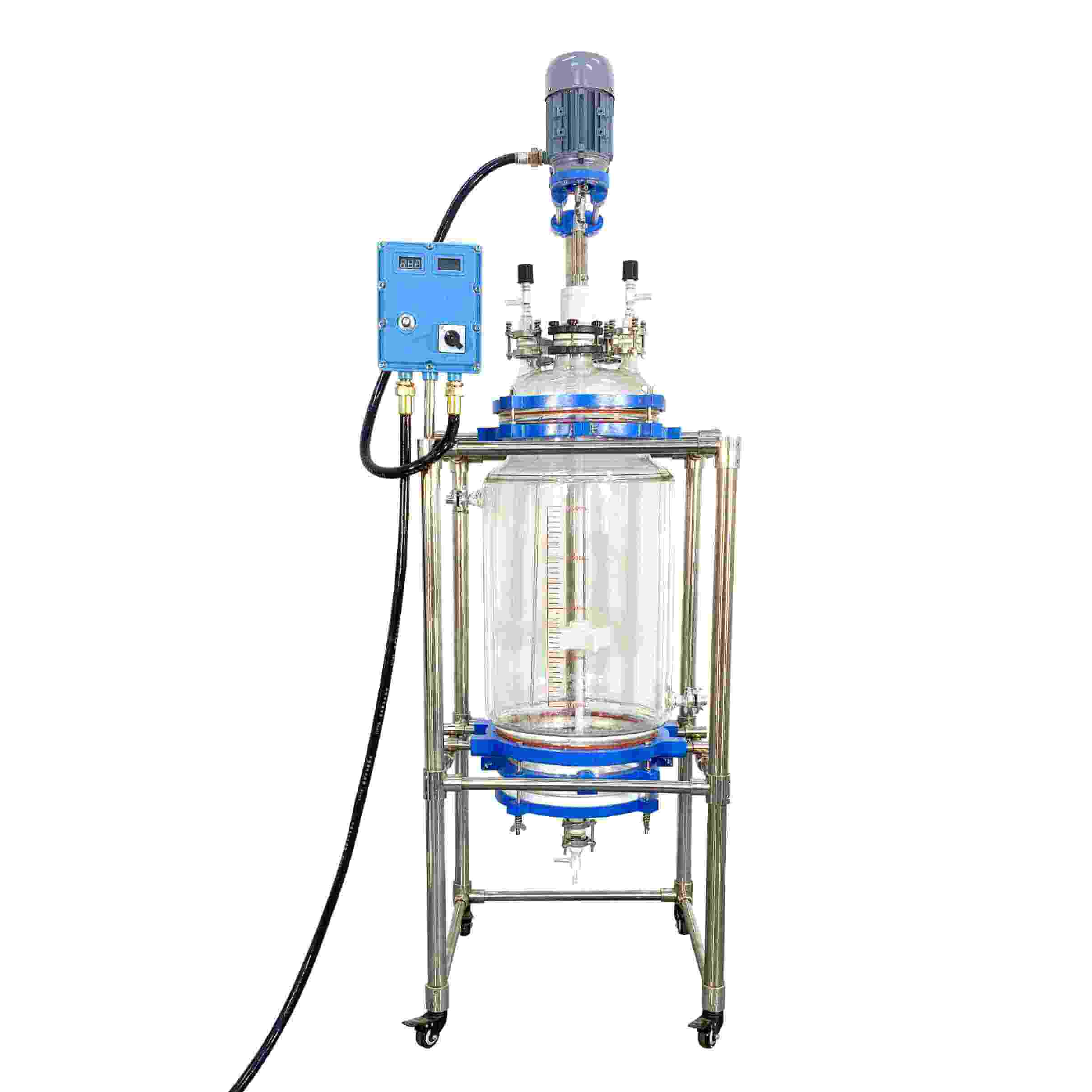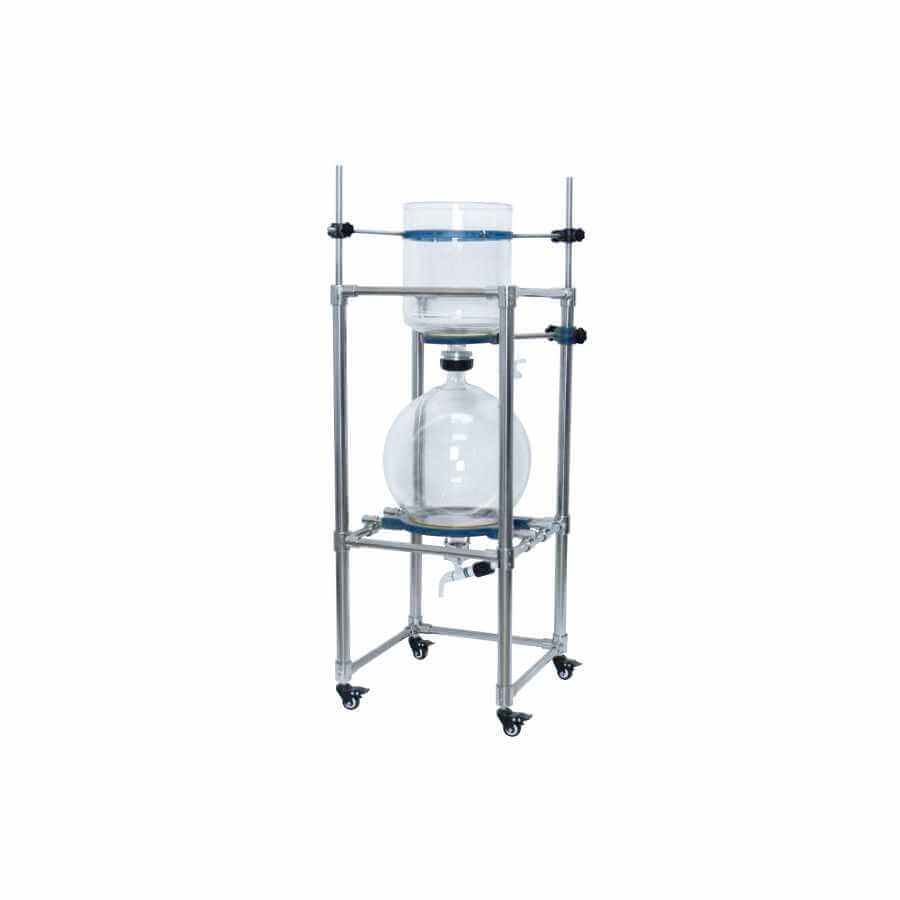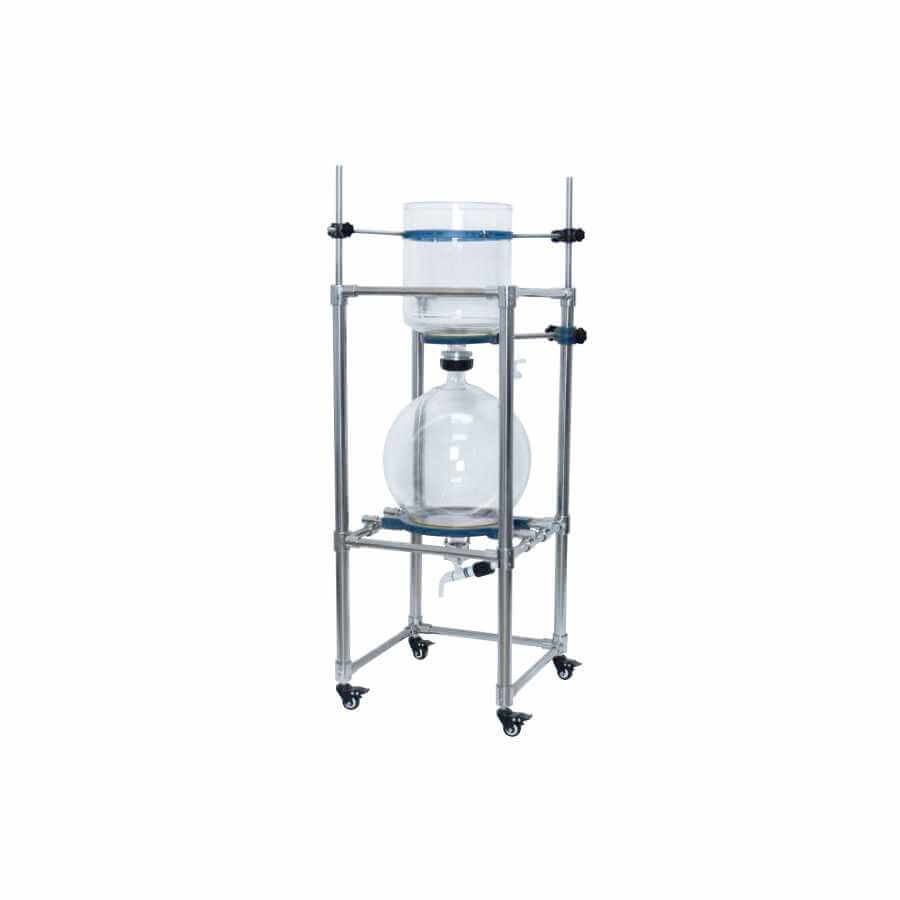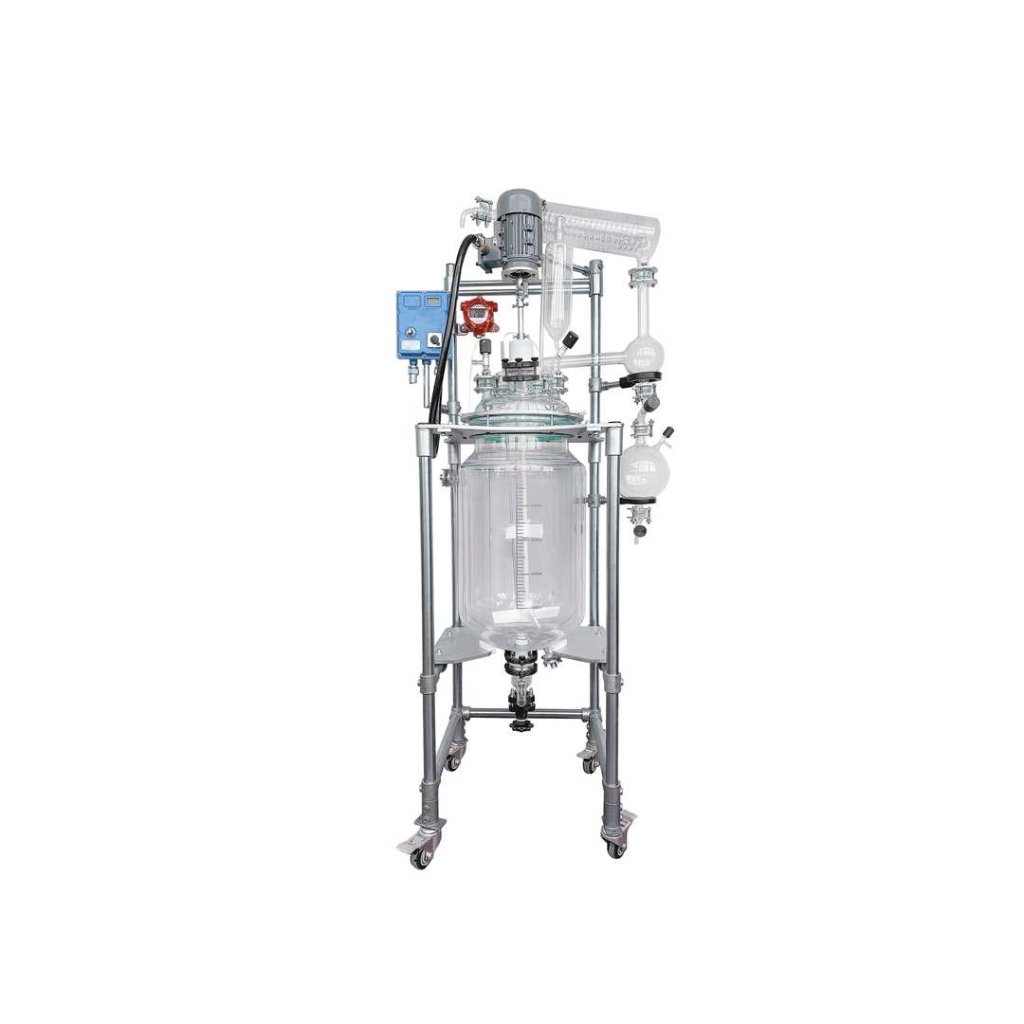

Glass Reactor
Glass reactors: used in chemical reactions, drug research and development, fine chemicals, food manufacturing, and other fields.
Material
glass
Capacity (L)
10-10000+
Mixing system
anchor, paddle, frame and others
Heating system
electric heating, oil heating and others
RUNGYU glass reactors are commonly used biochemical instruments and are widely used in modern fine chemicals, biopharmaceuticals, scientific research and experiments, and other industries. They can be used for concentration, distillation, reflux, separation, and purification reactions under the conditions of constant speed, constant force, and constant temperature. It is an ideal equipment for teaching, experiment, pilot test, and production.
Request a quoteThe double-layer glass reactor is a double-layer glass design. The reaction solvent is placed in the inner layer for stirring reactions. The interlayer can be connected to different cold and heat sources (refrigeration liquid, hot water, or hot oil) for cyclic heating or cooling reactions. Under the set constant temperature conditions, the sealed double-layer glass reactor can be stirred and reacted under normal pressure or negative pressure according to the requirements, and the reaction solution can be refluxed and distilled. It is an ideal pilot plant and production equipment for modern fine chemicals, biopharmaceuticals, and new material synthesis.

The working principle of a double-layer glass reactor
Through the interlayer of the double-layer glass reactor body, a constant-temperature (high or low temperature) hot solution or cooling liquid is injected to heat or cool the materials in the double-layer glass reactor at a constant temperature, and stirring can be provided. This equipment can perform vacuum stirring reactions, distillation and concentration reactions, separation and extraction, and reaction heating experiments. We can pass tap water into the jacket to take away the reaction heat. The materials react in the double-layer glass reactor and can control the evaporation and reflux of the reaction solution. After the reaction is completed, the material can be released from the discharge port at the bottom of the kettle, making the operation extremely convenient.
Reactions that can be carried out in double-layer glass reactors
1. Vacuum stirring reaction
2. Constant speed operation and mixing reaction
3. Can be distilled, refluxed and concentrated
4. Negative pressure operation, liquid dispensing function
5. Distillation by assembling the distillation column
6. Assemble a double-layer glass reactor production line according to specific requirements
7. For plant extraction, concentration has good process effects
8. Stirring and separation, equipped with a liquid separation device, the effect is obvious
9. Carry out reaction production of ultrafine powder
10. It can replace the rotary evaporator to concentrate high-purity materials and configure ultrasonic stirring to double the reaction time.

Advantages of double-layer glass reactor
1. Use G3.3 borosilicate glass, which has good chemical and physical properties;
2. Alloy steel mechanical seal, PTFE connection port, high-precision sealing maintained in working condition;
3. Pt100 sensor probe has high-temperature measurement accuracy and small error, which effectively improves work efficiency;
4. Gear reduction motor, strong torque, no noise;
5. Double PTFE stirring paddles, suitable for stirring and mixing low to high-viscosity liquids;
6. A PTFE discharge valve with a movable interface makes discharging faster.
Glass kettle body of double-layer glass reactor
The strength of glass is directly proportional to its thickness, so the thicker the glass, the higher its ability to withstand pressure and impact. However, the important characteristic of the glass of the double-layer glass reactor is not its strength, but its ability to resist thermal shock, high temperature, and low temperature. In the manufacturing process of double-layer glass reactor glass, the glass needs to be fired at a high temperature of 1440 degrees. After being finalized, it must be placed in an oven for annealing so that the inner glass and outer glass can maintain the same cooling rate and shrinkage ratio. This ensures that the thermal expansion coefficients of the inner glass and outer glass are consistent.
However, the thicker the glass thickness of the double-layer glass reactor, the more difficult it is to ensure the same cooling rate and shrinkage ratio of the inner and outer layers of glass. This leads to quality problems such as stress caused by inconsistent thermal expansion coefficients (the outer glass of the double-layer glass reactor cools down quickly. When the outer layer drops to room temperature and completes the cold shrinkage. The inner glass is not yet completed, and the outer glass will hinder the inner glass. The further cold contraction of the laminated glass creates a pulling force inside the glass. Once the glass is subjected to another temperature change, the glass will break).
Secondly, most chemical reactions are heating and cooling reactions. The thicker the thickness, the worse the heat transfer capability of the glass of the double-layer glass reactor, which directly affects the reaction effect.
Therefore, a balance point is needed between temperature resistance, heat transfer capacity, and strength. According to the national standard, a glass thickness of 6mm is an ideal level.
Double-layer glass reactors are widely used in laboratories due to the corrosiveness of the medium, hot and cold reaction conditions, transportation, use, and human problems. There will always be some unavoidable damage that will cause unnecessary cessation of experiments. Therefore, the daily maintenance of the double-layer glass reactor is also very important. Once cracks are found on the glass, they must be dealt with in time to avoid safety accidents. Before doing the experiment, be sure to check whether the double-layer glass reactor is damaged. If found, do not use it again.


